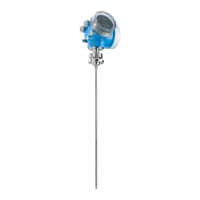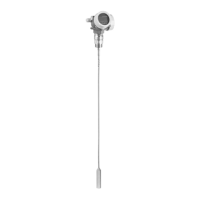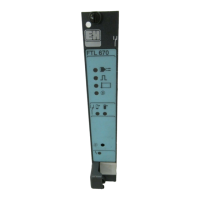Levelflex FMP51/52/53/54/55/56/57 XA00639F-A
6 Endress+Hauser
Safety instructions:
General
• Staff must meet the following conditions for mounting, electrical installation, commissioning and
maintenance of the device:
– Be suitably qualified for their role and the tasks they perform
– Be trained in explosion protection
– Be familiar with national regulations
• For installation, use and maintenance of the device, users must also observe the requirements stated in the
Operating Instructions and the standards:
– GB50257-1996: "Code for construction and acceptance of electric device for explosion atmospheres and
fire hazard electrical equipment installation engineering".
– GB3836.13-1997: "Electrical apparatus for explosive gas atmospheres, Part 13: Repair and overhaul for
apparatus used in explosive gas atmospheres".
– GB3836.15-2000: "Electrical apparatus for explosive gas atmospheres, Part 15: Electrical installations in
hazardous area (other than mines)".
– GB3836.16-2006: "Electrical apparatus for explosive gas atmospheres, Part 16: Inspection and
maintenance of electrical installation (other than mines)".
– GB15577-2007: "Safety regulations for dust explosive prevention and protection".
– GB12476.2-2006: "Electrical apparatus for use in the presence of combustible dust,
Part 1-2: Electrical apparatus protected by enclosures and surface temperature limitation -
Selection, installation and maintenance".
• Install the device according to the manufacturer's instructions and national regulations.
• Do not operate the device outside the specified electrical, thermal and mechanical parameters.
• Only use the device in media to which the wetted materials have sufficient durability.
• Refer to the temperature tables for the relationship between the permitted ambient temperature for the
sensor and/or transmitter, depending on the range of application, and the temperature class.
• Modifications to the device can affect the explosion protection and must be carried out by staff authorized
to perform such work by Endress+Hauser.
• When replacing the probe electronics or opening the connection between the remote cable and the probe,
a jumper plug must be used or a short-circuit must be established between the probe contact and the
potential equalization conductor to avoid electrostatically charging the probe.
• After mounting and connecting the probe, ingress protection of the housing must be at least IP66.
Perform the following to achieve the degree of protection:
– Screw the cover tight.
– Mount the cable entry correctly.
• When using in hybrid mixtures (gas and dust occurring simultaneously), observe additional measures for
explosion protection.
Safety instructions:
Special conditions
Permitted ambient temperature range at the electronics housing: –40 °C ≤ T
a
≤ +80 °C.
Observe the information in the temperature tables.
Device type FMP52, FMP55
• A probe coated with non-conductive material can be used if avoiding electrostatic charging of the probe
(e.g. through friction, cleaning, maintenance, strong medium flow).

